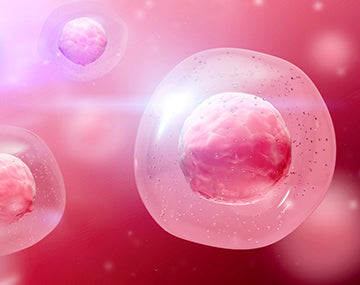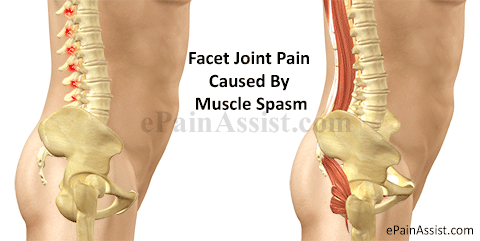What Is Arthritis?
Arthritis is common, but people don't pay much attention to it.
Do you know that arthritis is not a single disease, it is an informal way of referring to joint pain or joint disease.
Now, Let's know more about it:
Do you know that:
· Joint pain and musculoskeletal injuries are the most common cause of chronic pain (1).
· Musculoskeletal ailments affect about 25% of the entire US population and more than 50% of the affected population who suffers from arthritis experiences moderate to severe pain along with disability and altered quality of life (1)?
· More than 20% Americans that corresponds to about 50 million Americans, suffers from chronic pain – (pain lasting more than 6 months)?
· The annual healthcare cost of pain management is $636 billion per year.
Do You Know The Symptoms of Facet Joint?
Common arthritis joint symptoms include swelling, pain, stiffness and decreased range of motion. Symptoms may
be intermittent and can be mild, moderate or severe (2).
- Pain in back, shoulder, wrists.
- Spasm in adjacent muscles resulting in guarded postures.
- Can't stand upright.
- Restricted the movement of arms and shoulders.
Are There Really So Many People Have Arthritis?
You may surprise that the number of people suffer arthritis.
According to the Centers for Disease Control and Prevention (CDC) estimates, about 54.4 million adults had doctor-diagnosed arthritis in 2015. This compares with 2005, when there was an increase of 84,000. And 1 in 3 people age 18-64 have arthritis.
What Age Are People More Likely to Get Arthritis?
And the survey also estimates the age of adults with arthritis. It indicated that 75% of U.S. adults with arthritis in 2015 were younger than 65 years old. Of these, 34% are males and 41% are females. And 25% over 65 years of age. 10% are males and 15% are females.
These data shows that females are more likely than men to be affected with most forms of arthritis.
What Is the Best Way to Treat Arthritis?
There are a number of treatment modalities for the management as well as treatment of musculoskeletal ailments such as joint pain. Current treatment of choice for the management of joint pain / arthritis is NSAIDS (nonsteroidal anti-inflammatory drugs) as well as other over the counter painkillers. But every therapeutic option has some side effects.
For example, NSAIDS or nonsteroidal anti-inflammatory drug use is associated with heartburn, changes in blood etc.Contrary to NSAIDs, Red Light Therapy is much safer.
Unfortunately, for severe and chronic pain, most individuals require more potent and powerful pharmacological options such as opioids. Data suggests that about 4% of the adult American population rely on the opioid therapy for the long-term management of their joint pain. Although opioids offer significant pain relief, there are several risks and complications associated with long term opioid use, such as (3)
- Opioid dependence (more than 25% of all the individuals who are prescribed opioid for the management of chronic pain, abuse them at some point and about 10% opioid users develop opioid use disorder
- About 5% of all opioid-users transition to heroin use
- More severe life-threatening complications of opioid use include life drug overdose and opioid induced respiratory depression and death
Due to wide range of long-term complications, researchers have developed non-invasive therapeutic options such as Red Light Therapy to ensure maximum pain relief with minimal risk of side effects.
How Does Red Light Therapy Help Relief Join Pain & Arthritis?
How does Red Light Therapy exert its actions?
- Facilitates the proliferation or multiplication of cells to hasten the speed of recovery.
- Microcirculation or improving the flow of blood to the inflamed tissues that helps in delivering oxygenated blood to the healing tissues while flushing out the toxins and free radicals created as part of inflammatory processes. This is achieved by increased production of Nitric Oxide – a vasodilator to improve the flow of blood.
- Vascular Neoformation or formation of new blood vessels to maintain the steady blood circulation.
- Collagen production is an essential component of wound healing. When tissues are inflamed, new collagen production from fibroblasts helps in strengthening the injured tissues.
- Fibroblast activity also helps in healing and repair of bone matrix.
- Red Light Therapy also helps in the generation of ATP – i.e. energy packets to accelerate tissue metabolism by absorbing or accepting photoreceptors.
- Reducing the production of inflammatory mediators such as cyclooxygenase-2, tumor necrosis factor alpha (TNF-α), nuclear factor kappa B (NF-κB), prostaglandin E2, and interleukin (IL)-1β that decreases the intensity of inflammatory response.
Conclusion: Red Light Therapy Is Beneficial for Our Health
Red Light Therapy is delivered via LED or laser diodes that transmits of light for a variety of indications such as pain relief, stimulation of tissue healing and rejuvenation and anti-inflammatory properties.



